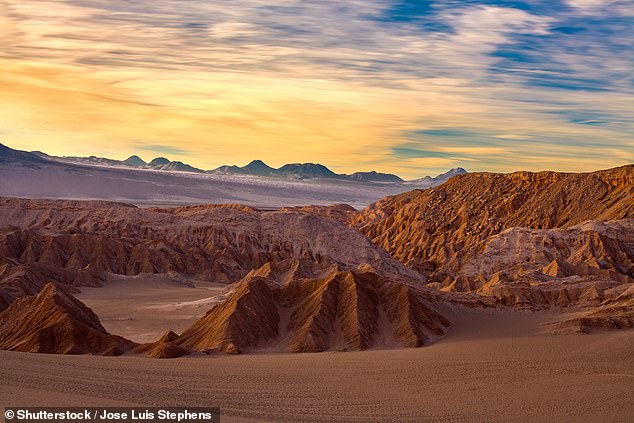The Atacama is the driest non-polar desert in the world: a landscape so vast and arid that NASA carries out expeditions to Mars there.
So when a carpet of purple flowers began to emerge from the ground in October 2022, Chilean President Gabriel Boric Font declared the diverse area a national park, granting it the most protected status the country offers.
Brightly coloured flowers aren’t exactly what you’d expect to find in a place like this, but there are more than 200 species of flowers in the Atacama, an area of 105,000 km2 that happens to be dotted with every shade.
I fly into Calama, the nearest airport, amid an orange-streaked night sky, and over the next few days I find that the bronze is regularly interrupted by a burst of lush green grass or a cobalt-coloured lagoon.
Guanacos, native wild camelids known as the “gardeners” of this flowering desert, nibble while horned taguas fight in the water. Peaches, lemons and oranges grow here, sweetened by minerals in the soil.
Charlotte Lytton explores the Atacama Desert in Chile, the world’s driest non-polar desert – a landscape so vast and arid that NASA conducts expeditions to Mars there
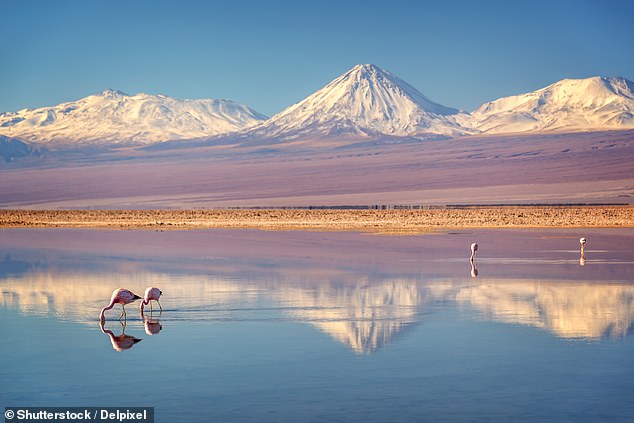
Charlotte begins her adventure at Laguna Chaxa (pictured above) where flamingos peck at the water almost silently.
Tourism figures in Chile have been growing rapidly, increasing by 84 percent between 2022 and 2023, with many choosing to make this stop in the north of the country.
There are excursions ranging from hiking through rocky valleys to watching the sunrise over hot springs and taking a dip in a lagoon so buoyant that you float on the water.
We begin our own bird-spotting adventure at Laguna Chaxa, where, on a sunny morning, flamingos peck at the water almost silently. There are three types of flamingo that thrive here: James’s flamingo, Andean flamingo, and Chilean flamingo (the latter distinguished by their deep pink tails). They are surrounded by passing vicuñas, another camelid, whose numbers are increasing thanks to the ultra-remote conditions.
Getting to every corner of this desert requires quite a bit of time on the road, with the bumps significantly smoothed out by the regions’ drivers and guides.
Andante Travels offers tours in conjunction with Tours by Locals, which they really are.
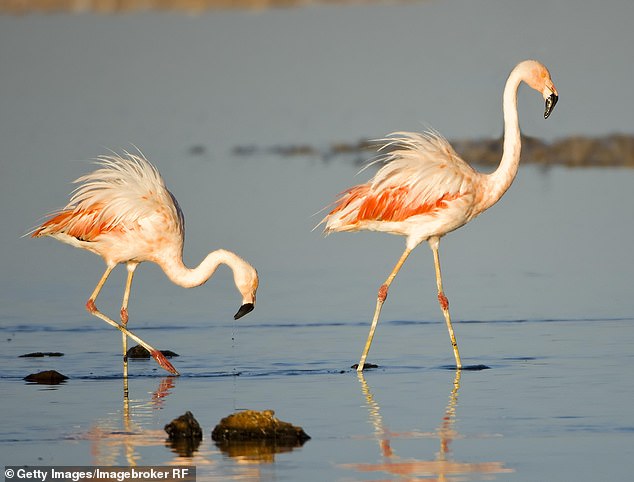
Charlotte points out that there are three types of flamingo in the area: the James’s flamingo, the Andean flamingo and the Chilean flamingo. Two birds of the Chilean variety are shown above.
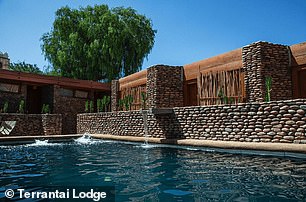
Pictured is Terrantai Lodge, a boutique hotel in the centre of San Pedro (the main town in Atacama).
We stop in the small town of Machuca, where our guide meets and introduces us to everyone we meet by name, urging us to try the local goat cheese empanada (delicious) and grilled alpaca (chewy).
The super dry climate also makes Atacama a wine paradise, with Carmenere being the best choice for a full-bodied red.
At Terrantai Lodge, a boutique hotel in the center of San Pedro (the main town in Atacama), you can try all the local wines with organic tastings every night, inside their beautiful patio.
Since Chile is one of the world’s top wine producers, trying them here is simply a matter of due diligence.
If you like to enjoy a drink (or several) at sunset, beware of the altitude: the hike up Cerro Toco reaches a summit of 5,600 meters on a trail where breathing is more difficult than walking. But if you prefer to take it slow, there is also plenty of flat terrain to explore.
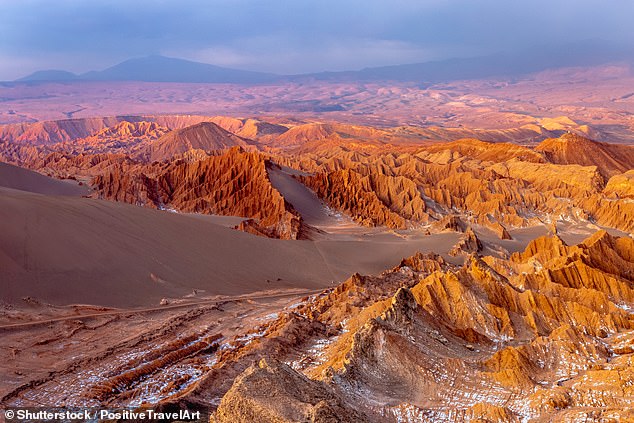
The Valley of the Moon, seen here, “offers the most perfect desert snapshot in the region”
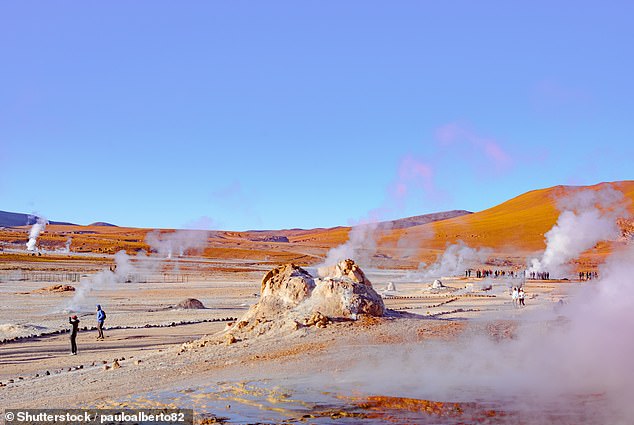
Charlotte visits the Tatio Geysers (above), where she watches plumes of white steam rise upwards.
The Valley of the Moon offers the most perfect desert snapshot of the region: there are golden dunes and tilted rock formations carved by wind and water, with part of the area covered in bright white salt.
A sunrise trip to the Tatio geysers also brings up white puffs: the cold air illuminates the steam from the hot springs as it blows.
The 4am drive hurts, of course, but a coffee at the end, with the spectacular Andes mountain range in view, makes the pre-dawn start worth it.
Things had already started well when we arrived at Ojos del Salar, a mini lagoon where the blue sky and fluffy clouds were perfectly reflected in the still water.
Later, a short drive followed by a hike through the tall green fields brought us to Laguna Cejar, a favourite for minimal effort and maximum buoyancy, where the very high salt content makes you bounce across the water. Like much of the Atacama, it is incredibly remote and peaceful – the only sounds you will hear are the laughter of those trying to swim as they bob up and down the lagoon. It seems only right to bid farewell to the afternoon with a pisco sour as the sun sets over this unique corner of the planet.
As we sip, our guide tells us an emerging scientific theory: the origin of all life can be found right here in the Atacama. With tamarugos soaring above the scorched ground and vizcachas (rabbit-like animals with enormous whiskers) darting by, it might not seem so far-fetched.
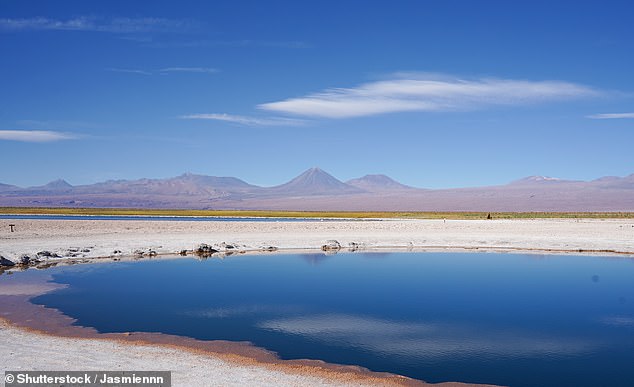
Charlotte says the “peaceful” Laguna Cejar, seen here, is an “easy favourite for minimal effort and maximum buoyancy, where the very high salt content makes you bounce across the water.”

